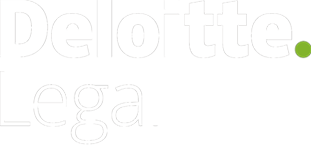2017 Insurance M&A Outlook.
Will tailwinds or headwinds prevail?
We anticipate that a mix of tailwinds and headwinds will influence insurance industry M&A activity in 2017. Which will prevail? This report looks back at 2016 and examines 2017 macro issues and key trends. By looking deeper, insurance executives can pinpoint M&A drivers and plan their strategy accordingly.
What is the forecast for insurance M&A?
Macro-level and organization-specific conditions lead us to expect that tailwinds will prevail against headwinds in 2017, producing an overall favorable environment for insurance M&A. Our outlook, however, varies by sub-sector:
The stagnant life and health insurance (L&H) sub-sector is likely to remain that way. Rising interest rates improve fundamentals for the business and Japanese players are looking to expand their existing platforms but available targets will remain scarce, as will deals valued in excess of $1+ billion.
Capital in the property and casualty (P&C) and reinsurance sub-sectors is at an all-time high and organic growth is exceptionally difficult to come by, making them ripe for middle-market consolidation.
Private equity-backed brokers are expected to continue focusing on brokerage deals, and seemingly everyone wants to get into InsurTech and direct distribution.
Tailwinds and headwinds: 2017 Insurance M&A drivers and trends
Investor confidence
Although investor confidence was abundant in 2015, it took a hit in 2016 as US equity markets fell sharply upon the start of the year. Uncertainty increased about the timing and magnitude of interest rate hikes; the implications of the November elections on future regulatory policy and taxes; a slowdown in corporate earnings growth; and the Brexit vote. What impacts could this shift have on insurance M&A?
Valuations and the pricing gap
Insurance equity valuations are not extreme by historical standards but are viewed as more fully valued than they were in 2015. In P&C, the price/book value (P/BV) ratio of announced deals actually decreased from 2015 to 2016 and was slightly below the long-run deal average of 1.35. P&C deals in 2016 were completed at prices that drove a very narrow range (relative to prior years) of P/BVs (low of 0.92 to a high of 1.45). While richer valuations may make it a better time to be a seller, they can make it more difficult for buyers to demonstrate that an acceptable return on investment is attainable.
Regulatory policy & tax code developments
It is possible that the Trump administration and Republican-controlled Congress will make some very significant changes to financial services industry regulations and the US tax code in 2017. While the lack of clarity about specific proposals and their timing may be a short-term inhibitor of insurance M&A, once implemented, some of the changes may drive increased deal-making as the year progresses.
Demand by foreign buyers to invest in the US market
Will foreign buyers seek to further expand their US insurance company footprint in 2017? While the coming year should see a continuation of inbound M&A, the overall activity may be somewhat muted—especially compared to 2015-2016’s blockbuster levels.
Exponential technologies: Buy or invest?
Despite all the marketplace excitement, insurance companies’ 2016 year over year aggregate InsurTech investments declined as insurers digested their investments from 2015 and continued to build capabilities around innovation and corporate venturing.
Please click here to download the full report.


